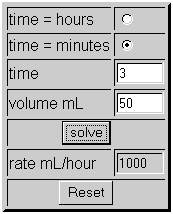

Ventricular tachycardia was defined as five or more consecutive beats arising below the atrioventricular node with an RR interval of 120 beats min −1 ). Dobutamine-atropine stress echocardiography was considered non-diagnostic when the peak heart rate was at least 85% of maximal in the absence of new or worsening wall thickening abnormalities. Intravenous (IV) atenolol was available to reverse the effects of dobutamine.

Reasons for interruption of the test were: severe angina with extensive wall thickening abnormalities and/or ST-segment elevation more than 2 mm at an interval of 80 ms after the J point compared with baseline in patients without previous myocardial infarction, symptomatic reduction in systolic blood pressure 240/120 mmHg, or sustained ventricular tachycardia. Throughout the dobutamine infusion the ECG was continuously monitored (three leads) and recorded (12 leads) at 1 min intervals. The left ventricle was divided into 16 myocardial segments according to the model proposed by the American Society of Echocardiography. In patients not achieving 90% of their age- and gender-predicted maximal heart rate and without symptoms or signs of myocardial ischaemia, atropine was administered, starting with 0.25 mg intravenously and repeated up to a maximum of 2.0 mg with continuation of dobutamine infusion. Dobutamine was administered intravenously with an infusion rate of 10 μg kg −1 min −1 for 3 min, increasing by 10 μg kg −1 min −1 every 3 min, up to a maximum of 50 μg kg −1 min −1. Dobutamine stress echocardiographyĪll stress echocardiography studies were performed by an experienced operator with dobutamine infusion for the assessment of myocardial viability, as previously described.
#Dobutamine drip trial#
The trial was approved by our Institutional Review Board and all patients with DSE-induced VT had provided written, informed consent. All patients with DSE-induced sustained monomorphic VT, during this period, were recruited and subjected to coronary angiography, electrophysiological testing, and follow-up with 24-h ambulatory ECG monitoring at 3-month intervals. Methods PatientsĪll patients undergoing DSE at Athens Euroclinic between July 2001 and February 2004, were considered for the study. Patients with DES-induced sustained monomorphic ventricular tachycardia were prospectively studied by means of coronary angiography and electrophysiological testing, and were followed-up for a period of 11–32 months.
#Dobutamine drip series#
We report on an extensive series of consecutive patients subjected to DSE for investigation of chest pain. Furthermore, no electrophysiological data for the characterization of this entity have been reported. No longitudinal studies on patients with DSE-induced sustained VT exist. Sustained monomorphic ventricular tachycardia (VT) has been reported to occur in 0–0.3% of DES but its prognostic significance is unknown, and the detection of clinical predictors of its occurrence has been controversial. The reported incidence of ventricular tachyarrhythmias such as frequent ventricular ectopic beats, non-sustained or sustained ventricular tachycardia, and ventricular fibrillation, during dobutamine stress echocardiography (DSE) varies between 0.02 and 4%.

Dobutamine stress echocardiography, sustained ventricular tachycardia Introduction



 0 kommentar(er)
0 kommentar(er)
